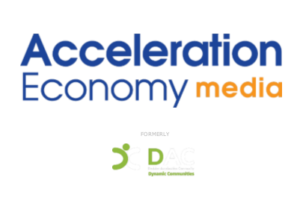An Essential Guide to the Structure of Microsoft Fabric


The Microsoft Fabric framework is designed to boost the efficiency and effectiveness of an organization’s infrastructure. Understanding and managing the Microsoft Fabric structure effectively is crucial for decision makers and administrators.
Proper management of tenants, capacity, domains, workspaces, and items ensures smooth operations without bottlenecks or downtime, boosting overall operational productivity. Effective management also helps maintain security and compliance with industry regulations, protecting sensitive information and avoiding legal issues.
Having a handle on the structure of Microsoft Fabric is vital for keeping business operations running smoothly. So, let’s review the various elements that make up the Microsoft Fabric structure.
Tenants
A tenant in Microsoft Fabric is like the whole setup of an organization within the Microsoft ecosystem. Think of it as an instance of Microsoft services (like Azure, Office 365, etc.) managed by one company. Each tenant is its own little world with users, security settings, and administrative controls.
Here’s the cool part: a company can have multiple tenants. This can be handy for large organizations with different departments or branches that need their own isolated environments. Having multiple tenants can improve security management, tailor services to specific needs, and even enhance performance by spreading out the load.
Capacity
Capacity in Microsoft Fabric is all about the resources given to a tenant. This includes elements like processing power, data storage, and other resources needed to run applications and services smoothly. Managing capacity the right way is key to avoiding downtime and making sure the organization can scale as needed. Too much or too little capacity can either waste resources or cause slow performance.
Domains
Domains within Microsoft Fabric are like different logical areas or entities within a tenant. Each domain can have its own policies, security settings, and user groups. Domains help keep different parts of an organization separate, allowing for custom security and administrative settings. Managing domains effectively keeps sensitive info secure and ensures that different departments or units can work independently without stepping on each other’s toes.
Workspaces
Workspaces are collaborative areas within a domain where users can team up on projects or tasks. Each workspace can contain multiple items like documents, applications, and datasets. Workspaces make teamwork easier by providing a shared space where resources can be accessed and managed together. Properly setting up and managing workspaces enhances productivity and keeps workflows organized.
Items
Items in Microsoft Fabric are the individual components or resources within workspaces. These can include files, applications, datasets, and more. Managing items well ensures that users have access to what they need while keeping things secure and organized. Keeping items tidy and up to date prevents clutter and reduces the risk of data mishandling.
Good Practices for Administration
Administering Microsoft Fabric effectively involves several key practices. Conducting regular audits of the tenant, capacity, domains, workspaces, and items helps identify inefficiencies or security issues, ensuring compliance with organizational policies and regulations. Proper access controls, such as role-based access control (RBAC), ensure that only authorized users can access sensitive information and critical resources.
Regularly reviewing and optimizing resource allocation helps maintain performance and reduce costs by adjusting resources as needed. Additionally, keeping thorough documentation of the Microsoft Fabric structure and providing training to users ensures that everyone knows how to use the system effectively, preventing misuse and promoting best practices.

